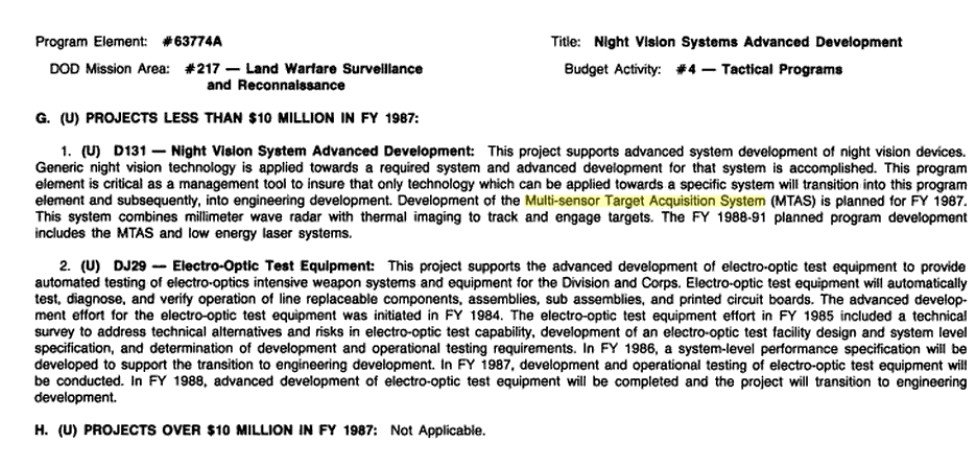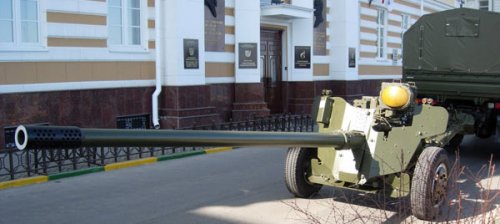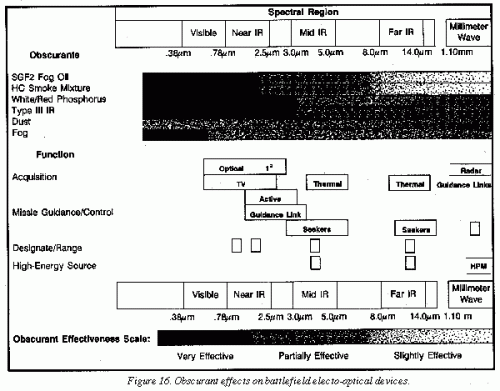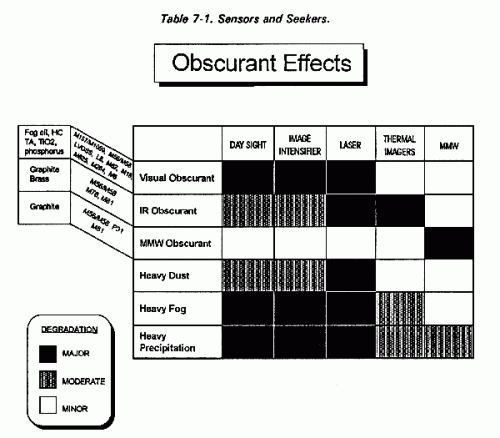You are using an out of date browser. It may not display this or other websites correctly.
You should upgrade or use an alternative browser.
You should upgrade or use an alternative browser.
Soviet self-propelled AT gun
- Thread starter Andrei_bt
- Start date
- Joined
- 26 January 2011
- Messages
- 2,226
- Reaction score
- 646
TomS said:Radar fire control? That doesn't make much sense for an AT gun. Could that box next to the gun be a thermal imaging camera instead?
Depends on the wavelength of the radar. Longbow millimetre wavelength radar fire control has been shown to work very well on the M1 Abrahms and was intended for the M1a2 upgrade but was cancelled because of cost.
- Joined
- 16 April 2008
- Messages
- 9,624
- Reaction score
- 14,556
rickshaw said:Depends on the wavelength of the radar. Longbow millimetre wavelength radar fire control has been shown to work very well on the M1 Abrahms and was intended for the M1a2 upgrade but was cancelled because of cost.
Wow, that's a new one on me. I' love to read more on this.
Andrei_bt
ACCESS: Confidential
- Joined
- 24 October 2009
- Messages
- 135
- Reaction score
- 222
TomS said:Radar fire control? That doesn't make much sense for an AT gun. Could that box next to the gun be a thermal imaging camera instead?
The serial produced towed MT-12R AT gun has the same radar and showed very well. It has both advantages and disadvantages to thermals. This was an attempt to make the mobile gun.
Andrei_bt
ACCESS: Confidential
- Joined
- 24 October 2009
- Messages
- 135
- Reaction score
- 222
TomS said:rickshaw said:Depends on the wavelength of the radar. Longbow millimetre wavelength radar fire control has been shown to work very well on the M1 Abrahms and was intended for the M1a2 upgrade but was cancelled because of cost.
Wow, that's a new one on me. I' love to read more on this.
Sedrial produced -
Attachments
Andrei_bt
ACCESS: Confidential
- Joined
- 24 October 2009
- Messages
- 135
- Reaction score
- 222
rickshaw said:TomS said:Radar fire control? That doesn't make much sense for an AT gun. Could that box next to the gun be a thermal imaging camera instead?
Depends on the wavelength of the radar. Longbow millimetre wavelength radar fire control has been shown to work very well on the M1 Abrahms and was intended for the M1a2 upgrade but was cancelled because of cost.
Any proof on this information about "radar fire control on the M1 Abrahams " ?
Maybe link or photo?
- Joined
- 16 April 2008
- Messages
- 9,624
- Reaction score
- 14,556
Andrei_bt said:The serial produced towed MT-12R AT gun has the same radar and showed very well. It has both advantages and disadvantages to thermals. This was an attempt to make the mobile gun.
Thanks. I'd never heard of that before. It seems an unusual solution, but as you show, it appears to have had some advantages. It would certainly defeat thermal smoke, for example.
- Joined
- 21 May 2006
- Messages
- 3,003
- Reaction score
- 2,288
Looks like an adaption of the 2S1 Gvosdika 122mm SPH chassis?
Always loved and respected the Soviet`s/Russian`s ability to adapt a common weapon system for so many other roles
Regards
Pioneer
Always loved and respected the Soviet`s/Russian`s ability to adapt a common weapon system for so many other roles
Regards
Pioneer
- Joined
- 26 January 2011
- Messages
- 2,226
- Reaction score
- 646
TomS said:rickshaw said:Depends on the wavelength of the radar. Longbow millimetre wavelength radar fire control has been shown to work very well on the M1 Abrahms and was intended for the M1a2 upgrade but was cancelled because of cost.
Wow, that's a new one on me. I' love to read more on this.
It was trialled about 15 years ago now. It was written up extensively at the time in Jane's where I read about it. Basically they adapted the Longbow system from the Apache and allowed it to control engagements. The commander just had to designate priority of targets and the system would handle the engagement completely autonomously. The gunner did not have to intervene in the process at all. It was intended for the M1a2 upgrade but was cancelled because of cost. I've seen proposals for it to be included in the M1a3 upgrade but I suspect it won't be as the new priority is to adapt the M1 more specifically for MOUT with increased levels of protection and more weapons than can be used to engage targets at higher elevations.
- Joined
- 18 March 2008
- Messages
- 3,529
- Reaction score
- 999
There is a big difference between the Longbow millimeter radar and this unit attached to the Russian anti tank guns. The Longbow has a rapidly rotating antenna that not only precisely locates targets but identifies them due to their unique radar signature. So it is great for target acquisition, situational awareness of the battlefield and fire control.
This Russian unit is fixed co-axial to the gun so even with a phased array would have a limited field of regard. Which is not to say it wouldn’t be valuable, anti tank guns are usually sited on limited arcs anyway. But it is a very different concept to the Longbow: fire control only. Also judging by the multiple generators fixed to the towed gun it is a major power hog compared to even a cooled thermal viewer and laser rangefinder.
The FCS project has advanced AESA radars for a range of functions on future US ground combat vehicles. This includes the TA/SA functions of Longbow as well as part of a defensive system.
This Russian unit is fixed co-axial to the gun so even with a phased array would have a limited field of regard. Which is not to say it wouldn’t be valuable, anti tank guns are usually sited on limited arcs anyway. But it is a very different concept to the Longbow: fire control only. Also judging by the multiple generators fixed to the towed gun it is a major power hog compared to even a cooled thermal viewer and laser rangefinder.
The FCS project has advanced AESA radars for a range of functions on future US ground combat vehicles. This includes the TA/SA functions of Longbow as well as part of a defensive system.
- Joined
- 18 March 2008
- Messages
- 3,529
- Reaction score
- 999
Some more info on US Army radar fire control. The Block III M1 Abrams was planned to have the "Startle" MMW radar for target acquisition and fire control. M1A2/M1A1 AIM are Block II M1 Abrams, Block III was cancelled at the end of the Cold War. Startle was to operate as a FCS by both tracking the target and the outgoing shell and making corrections for the next shell.
Stranger_NN
ACCESS: Restricted
Experimental antitank self-propelled gun with radar fire controll on T-62 chassis. Early version additional info (in russian)
Last edited by a moderator:
Kugelblitz
ACCESS: Restricted
- Joined
- 25 May 2008
- Messages
- 41
- Reaction score
- 21
Was this creature assigned an object number? Is it the common 115mm gun?
C
CostasTT
Guest
According to the photo caption (Танк Т-62 с МТ-12 и РЛ прицелом), the gun is the 100 mm MT-12.
- Joined
- 26 January 2011
- Messages
- 2,226
- Reaction score
- 646
Stranger_NN said:Experimental antitank self-propelled gun with radar fire controll on T-62 chassis. Early version.[/center]+ additional info (in russian)
I assume there is a "late version"? Any pictures?
- Joined
- 27 December 2005
- Messages
- 17,767
- Reaction score
- 26,578
Complex "Norov"
By the mid-seventies to the anti-tank weapons, along with requirements to ensure a high probability of destruction of enemy tanks at significant distances from the firing position (2-3 km) are presented as basic requirements for mobility. This was due to the need for timely lessons lethal firing positions, a rapid succession of them during the battle, providing opportunities to participate in the counterattack, etc. In foreign countries, were accepted for service SAU "OKTOS, M-56," Yagdpantser "," Ewen "," Scorpion ", etc.
Therefore, the decision of the MIC USSR on 17 May 1976 a group of enterprises were asked to perform in the 1976-79gg. development of 100-mm self-propelled anti-tank gun with automatic instrumentation radar fire control system (code "Norov). The development was carried out by TTT Grau.
Production would be performed on the basis of self-propelled howitzers 2S1. The head singer of the complex - Bucyrus, head singer of automatic radar fire control instrumentation (ARPKUO) - EDB (SRI Strela, Tula).
Chief Designer ARPKUO - Simachev VI Deputy Chief Designer: the scheme and the technical part - Sokolov BA (June 1978 - Shmyrev AV), to design parts - Saulin OI (1981 - Kuhlmann VS).
ARPKUO complex was to ensure the detection of a moving vehicle at a distance of not less than 3000 m, and tracking of targets with the required accuracy - with a minimum distance of 2000 m.
Because these requirements are satisfied by radar instrument complex "Ruta", that development was conducted with maximum uniformity with this complex. Therefore tehproekt ARPKUO was developed already in the III quarter. 1976, and working documents - in the IV kv.1977 year.
Prototyping solution MCI was requested to plant "Arsenal".
However, the plant "Arsenal" because of the prevailing circumstances at the plant in the required time for the samples manufactured, and therefore the decision of the MIC USSR deadline for presentation of "Norov" on state tests has been postponed to 1981. Since prototyping in the factory "Arsenal" was carried out satisfactorily, then to avoid a possible breakdown of the new deadline for presentation of "Norov" on state tests SRI Strela organized manufacturing equipment in its pilot plant and the first sample ARPKUO was delivered to the customer in Iikv. 1981 and aims to Bucyrus for the preparation of a prototype of "Norov" for testing. A second sample ARPKUO was manufactured in pilot production of the Institute in the IV quarter. the same year.
At this time revealed several flaws and problems with other subcontractors ACS. Therefore, preliminary tests of "Norov were initiated only in 1983 and was completed in 1985. By this time the armies of several countries began to receive new models of tanks, frontal armor which successfully resisted the anti-cannon artillery projectiles caliber 100 mm. To combat these tanks it was necessary to create a more powerful anti-tank guns. Complex "Norov was recognized as unsound and decision MIC USSR from December 1985 work on this self-propelled unit were closed.
Stranger_NN
ACCESS: Restricted
The latest version, "Norov" - in the first message of the topic!rickshaw said:I assume there is a "late version"? Any pictures?
lastdingo
Blogger http://defense-and-freedom.blogspot.de/
Radar is able to see through smoke, while low light vision doesn't (and thermals only had their breakthrough in tanks during the 80's, 90's for the Russians). Modern multi-spectral smoke even blocks thermal sight for a while.
Stranger_NN
ACCESS: Restricted
Of course, but active radar - in itself a good target, as opposed to a passive thermal imager.lastdingo said:Radar is able to see through smoke, while low light vision doesn't (and thermals only had their breakthrough in tanks during the 80's, 90's for the Russians). Modern multi-spectral smoke even blocks thermal sight for a while.
- Joined
- 12 July 2008
- Messages
- 394
- Reaction score
- 148
lastdingo said:Radar is able to see through smoke, while low light vision doesn't (and thermals only had their breakthrough in tanks during the 80's, 90's for the Russians). Modern multi-spectral smoke even blocks thermal sight for a while.
Actually modern smoke can block radar wavelengths as high as X-band too, though most of the deployed anti radar smokes only work against stuff in the MMW. I'm not sure exactly when this smoke came into service but it seems to have been the late 1980s or early 90s, with the concept being much older. Trouble has been a lot of the materials used to make the anti radar smokes don't biodegrade, which has caused problems with the earthworms living on the training ranges dieing... I am not joking... but they seem to have solved this issue now.
Artillery chaff shells also exist that can block just about any radar, but you need a damn lot of them to create an effective ground level screen, its the kind of thing that would only really be justified for a massive operation like a forced river crossing.
Attachments
- Joined
- 18 March 2008
- Messages
- 3,529
- Reaction score
- 999
Obscurants make no tactical difference with these systems anyway. They are fire control not target acquistion. The radar is used basically the same as a shipboard target tracking radar it is slewed to the target by other means and then locks onto the target and can also track the outgoing shell to provide adjust fire to ensure the second round hits. So target detection would be visual, IR, etc or another search radar. They would be easy to countermeasure with a RWR triggering self defence chaff. Of course no NATO tanks have RWR/Chaff but if the Soviets started to field these systems in large numbers they could easily be rolled out.
- Joined
- 26 January 2011
- Messages
- 2,226
- Reaction score
- 646
Stranger_NN said:The latest version, "Norov" - in the first message of the topic!rickshaw said:I assume there is a "late version"? Any pictures?
Thank you. The dates mentioned and the connection are a little vague.
jsport
what do you know about surfing Major? you're from-
- Joined
- 27 July 2011
- Messages
- 7,742
- Reaction score
- 5,766
any more info on Startle MMWR?Some more info on US Army radar fire control. The Block III M1 Abrams was planned to have the "Startle" MMW radar for target acquisition and fire control. M1A2/M1A1 AIM are Block II M1 Abrams, Block III was cancelled at the end of the Cold War. Startle was to operate as a FCS by both tracking the target and the outgoing shell and making corrections for the next shell.
- Joined
- 27 December 2005
- Messages
- 17,767
- Reaction score
- 26,578
- Joined
- 17 January 2015
- Messages
- 131
- Reaction score
- 419
any more info on Startle MMWR?

Similar threads
-
-
Bofors VEAK 40 X 62 (Vagn Eldledning Automatkanon 40 mm experimental model 1962)
- Started by blockhaj
- Replies: 3
-
-
Bofors VAK 40 S 49 (Vagn Automatkanon 40 mm Swedish model 1949), lvkv fm/49, lvkv 42
- Started by blockhaj
- Replies: 3
-




